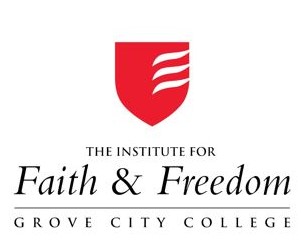How to Run Ahead of the Ticket

If Republicans hope to break their wretched streak of disappointing presidential campaigns – losing the popular vote in five of the last six White House contests – they should learn crucial lessons from the only candidate in that dismal span who proved notably more popular than his party’s national brand: John McCain.
Indignant conservatives may instantly object, citing the conventional wisdom that viewed McCain’s campaign as singularly hapless and inept, and noting the undeniable fact that the Arizona Senator’s opponent, Barack Obama, won a higher percentage of the popular vote – 52.9 percent- than any Democratic candidate since Lyndon Johnson.
Nevertheless, by one important measure McCain outperformed all of his party’s recent candidates and demonstrated personal appeal that far surpassed the GOP’s institutional standing with the electorate. In 2008, Republican candidates for the House of Representatives won a paltry 42.4 percent of the popular vote across the country, while on the same ballot John McCain drew 45.7 percent in his race for the White House: an advantage for the presidential nominee of 3.3 percent.
By comparison, in both races by George W. Bush the nominee led House candidates on his ticket by far less meaningful margins: just 0.6 percent in 2000, and 1.4 percent in 2004. Meanwhile, Bob Dole in 1996 and George H. W. Bush in 1992 did much worse than Republican House candidates in those years, both running more than 7 points behind their Congressional ticket-mates. Mitt Romney also did worse than Republican House nominees in 2012, with 47.3 percent as opposed to 48.1 percent.
These numbers matter because the overall vote for the House of Representatives gives the best indication of the national standing of a political party. Most voters know very little about Congressional candidates in their district; in fact, polls show that the great majority of Americans can’t even name the individual who represents them in the House. When people pull the lever for one candidate or another in these fiercely fought district elections it usually reflects attitudes toward the “R” or “D” after the names on the ballot more than any response to the personal qualities that play far more important roles in presidential, or even Senatorial or gubernatorial, campaigns.
In 2008, the Republican banner had been soiled and tattered by the September economic collapse and the unpopular bank bailout just weeks before the election, not to mention mounting war weariness concerning Iraq, giving Democratic House candidates a crushing 10.5 percent edge on Election Day. Nevertheless, John McCain’s personal popularity allowed him to make a much closer race, despite an underfunded and poorly organized campaign, a very controversial running mate, and the general disapproval associated with the GOP label.
To understand why, it’s worth returning to a happier era for Republican presidential candidates. Just as GOP nominees lost the popular vote in five-of-six races since 1992, they won the popular vote in five-of-six races between 1968 and 1988. The only Democratic win in that span occurred when Jimmy Carter eked out a 50.1 percent victory over Gerald Ford in 1976.
Yet this period hardly represented an era of partisan Republican dominance: in none of those six elections did the GOP win majorities in the House of Representatives. On average, the GOP presidential nominees outperformed their Congressional running mates by 4.7 percent of the popular vote.
They did so by following the model of GOP presidential success pioneered by Dwight Eisenhower in his two landslide victories in 1952 and ’56, when he ran ahead of Republican candidates for the House by an average of more than 7 points. Ike loomed as a larger than life figure over his era, a familiar celebrity with a compelling personal narrative and a non-ideological image that gave him special appeal to independents and Democrats. Reagan and, to some extent Nixon, demonstrated that same attraction that made them far more effective vote-getters than their more partisan GOP allies. Today we may think of Reagan as an uncompromising, doctrinally pure conservative, but in his first successful presidential campaign in 1980 many Americans still knew him primarily as a veteran movie star; his support by prominent liberals (including Black Panther Eldridge Cleaver and former Democratic Senator Eugene McCarthy) gave him strong bi-partisan credentials. In the same way, McCain benefited from tireless support by his Democratic friend Joe Lieberman and a justly-celebrated history as a prisoner of war, allowing him to partially transcend the public’s deep distaste for his party in 2008.
The important point here isn’t that McCain and Eisenhower did better than their party’s Congressional candidates because they were more moderate, or that Reagan got more votes because he was more conservative, or that Nixon outperformed the nominees for the House because he seemed more ideologically heterodox. The real lesson is that when it comes to the presidency, voters decide more on personality than on philosophical or policy considerations. Obama’s victory over Romney didn’t indicate that the electorate shared his vision of a larger, more activist government: in fact, exit polls showed a big majority preferring a smaller government that attempted to do less. At the same time, Obama beat Romney by 60 points on a question about who cared most about “people like me,” and that image as a more compassionate candidate tilted the entire election in his direction.
The days of clear partisan alignments and reliable ideological voting blocs disappeared with the see-saw elections starting after World War II. This represented a profound change in American politics that many politicians and pundits only grudgingly accept. To come to terms with the depth of that change, consider that in all nine presidential elections from 1920 through 1952, the winning White House candidate represented the same party that simultaneously swept both House and Senate. The public switched from strongly Republican to strongly Democratic in the midst of that span, but saw no need for divided government.
Since 1956, however, Americans have split their votes most of the time: electing majorities to at least one house of Congress that opposed the winning popular vote presidential candidate in 9 of the last 13 elections. For more than fifty years, voters have reliably ignored or even disdained all talk of partisan realignment or emerging ideological majorities, choosing in more than two thirds of presidential contests that that the two elective branches of government should disagree with one another.
This means that Republicans would make a serious mistake to argue that victory demands that the next nominee must be more conservative, or more moderate for that matter, than Mitt Romney. The public’s not looking for a true believer to move the party to the right, or a wary pragmatist who will shift toward the center, but for a fresh, formidable figure that rises above the scary, petty Washington gridlock. Many believed they had found such a president with Barack Obama, but he seemed shrill and partisan in his first two years, lost control of Congress and then drew 4 million fewer votes the second time he ran.
If Republicans want to win again they need nominees who can transcend partisanship with magnetic personalities and stirring stories that trump weary policy debates. In the next four years the GOP should go big: finding, recruiting or developing potential candidates who look larger than either of the two parties that seem increasingly tired, shabby and small.
A version of this column appeared originally in THE DAILY BEAST.




















